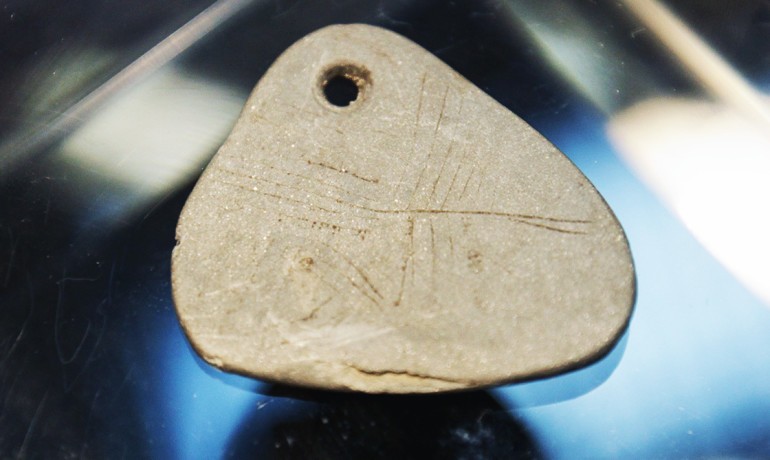Archaeologists from the University of York in Great Britain have reported an amazingly rare discovery: an etched pendant from the Mesolithic era. The etched artwork on the 11,000-year-old fragile pendant is the earliest known Mesolithic art in Britain.
Crafted from a single piece of shale, the subtriangular three-millimeter-thick artifact was found recently at the early Mesolithic site at Star Carr in North Yorkshire. The pendant contains a series of lines that archaeologists believe may represent a tree, a map, a leaf, or even tally marks.
Engraved motifs on Mesolithic pendants are extremely rare and no other engraved pendants made of shale are known in Europe.
“It was incredibly exciting to discover such a rare object. It is unlike anything we have found in Britain from this period. We can only imagine who owned it, how they wore it, and what the engravings actually meant to them,” says Nicky Milner, professor of archaeology at the University of York.

“One possibility is that the pendant belonged to a shaman—headdresses made out of red deer antlers found nearby in earlier excavations are thought to have been worn by shamans. We can only guess what the engravings mean but engraved amber pendants found in Denmark have been interpreted as amulets used for spiritual personal protection.”
When archaeologists uncovered the pendant last year the lines on the surface were barely visible. They used a range of digital microscopy techniques to generate high resolution images to help determine the style and order of engraving. They also carried out scientific analysis to try to establish if the pendant had been strung or worn and whether pigments had been used to make the lines more prominent.
Star Carr is one of a number of archaeological sites around what was the location of a huge lake which covered much of the Vale of Pickering in the Mesolithic era. The pendant was discovered in lake edge deposits. Initially researchers thought it was natural stone—the perforation was blocked by sediment and the engravings were invisible.
It is the first perforated artifact with engraved design discovered at Star Carr though shale beads, a piece of perforated amber, and two perforated animal teeth have been recovered from the site previously.
“This exciting find tells us about the art of the first permanent settlers of Britain after the last Ice Age,” says Chantal Conneller from the University of Manchester. “This was a time when sea-level was much lower than today.
“Groups roamed across Doggerland (land now under the North Sea) and into Britain. The designs on our pendant are similar to those found in southern Scandinavia and other areas bordering the North Sea, showing a close cultural connection between northern European groups at this time.”
The European Research Council, Historic England, and the Vale of Pickering Research Trust funded the work. The discovery is reported in the journal Internet Archaeology.
Republished from Futurity.org as a derivative work under the Attribution 4.0 International license. Original article posted to Futurity by David Garner-York.
Featured Image Credit: U. York
Now, Check Out:
- [Video] How Brain Folding Relates to Intelligence and Illness
- Underwater Ruins of Greek Harbor are Full of Surprises [Video]
- Our Stone Tool Discovery Pushes Back the Archaeological Record by 700,000 Years
- Explainer: how do archaeologists discover forgotten ancient monuments?
- 10 Amazing and Mysterious Monuments of the World [Video]

